
Shear & Saws
ASPM is a leading manufacturer & supplier of shears and saws for Rolling mills industry in India . We have wide range of shears and saws which are sturdy in construction and have higher efficiency. We have wide range of the shears and Saws which suits best to the clients requirement Customized solutions can also be provided that fits well into the client’s unique business requirements.
Cold Shear
Type: Electro Mechanical Type Cold Shear
Capacity: 500 ton/350 ton
Application: Cold shear is located right after the Cooling Bed to cut Cold Rebar and Alloys
Function: Cold Shears are used to cut the Bars into Commercial lengths. These are designed to cut metals using their high strength capacity, produced in various shapes, sizes and sections. Cold shears can be customized to be designed and manufactured for particular requirements of your Rolling Mills.
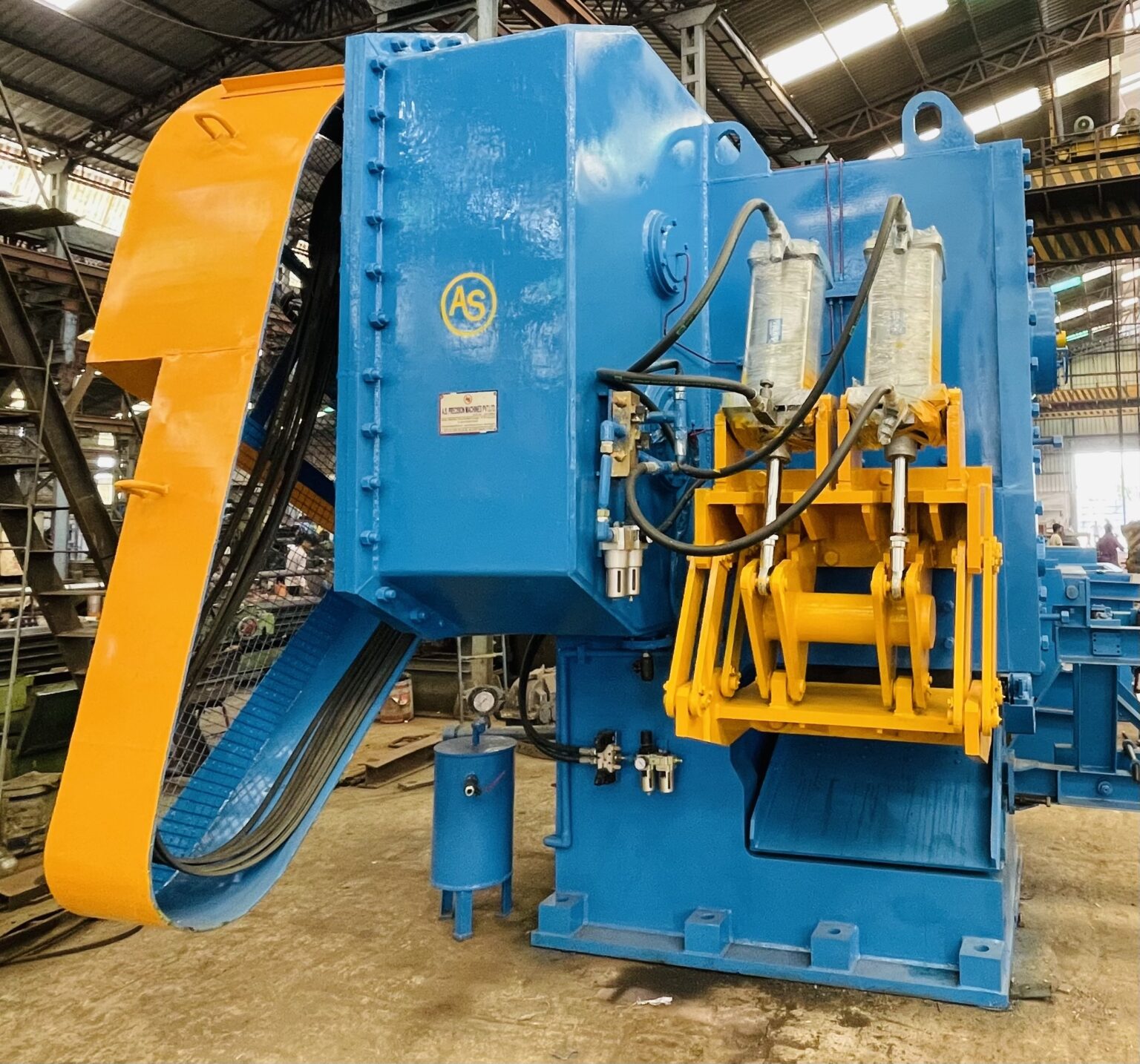
Rotary Shear Crop & Cobble Shear
These crop-cum-cobble shear operate to kept front and back end of the stock to ensure smooth entry into the rolling mill passes and also to cut the oncoming stock into small sizes in case of the mill experiences cobble.
- These are manufactured in various sizes with centers ranging from 500 mm to 850 mm depending on the sizes of sections to be cut.
- The gears are made of case hardened steels and the shafts are forged from C45 steel.
- They cut the material on the fly.
- Selected fabricated housing.
- Anti friction bearings.
- Entry guide- Fixed.
- Exit guide- Pneumatically operated, bottom collapsible type for crop disposal.
Depending on location they can cut different sections at speeds in line with the speed of the bars.They cut the material on the fly.
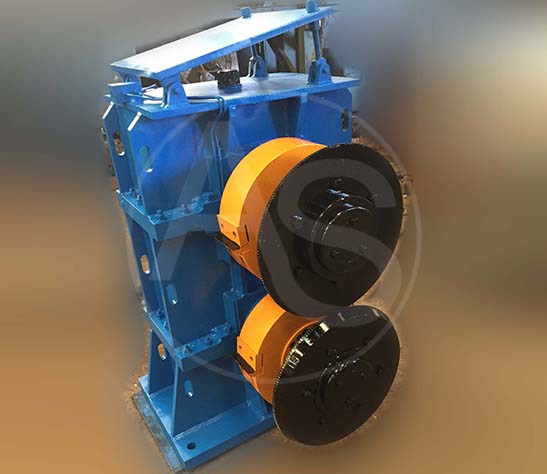
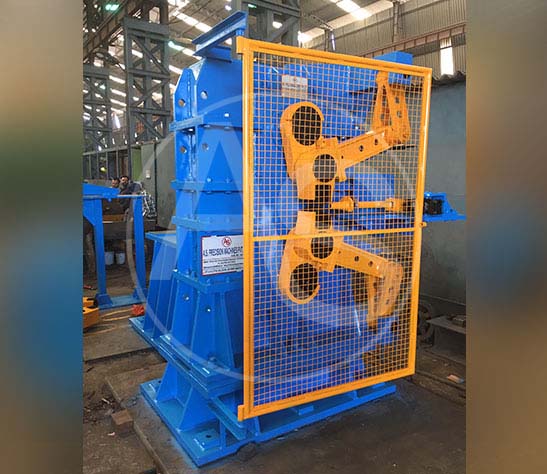
Crank Type Flying Shear
Crank type flying shears are used for cutting finished stock of 10 to 70 mm size. The cranks ensured a clean cut on the severed ends and will not required de-burring of the ends. These are also start & stop type and powered with appropriately powered variable speed motors to cater to different finish line speeds of the product.In flying mode the cranks do not operate and the cropping of the ends is done at higher speed for small sections. The bars are cut to cooling bed lengths as per requirement.
Technical Features:
Sizes to be cut(flying mode) Ø8mm- Ø16mm(Max). TMT
Sizes to be cut (without crank) Ø8mm- Ø16mm(Max). TMT Speed 24-14m/s
Sizes to be cut (with crank) Ø16 mm- Ø32mm TMT, Speed 7-3 m/s
Bar Speed : 24 m/s per (max) to 3m/s
Blade Center: 1020mm
Continuous Shear
Range 8mm to 16mm TMT bar.
FUNCTION
To cut set length of TMT bar being rolled above 20m/s at a minimum temperature of 550 deg C
HIGHLIGTS
» The casing is vertically split to take the separating force during the thermally seconds when the cut is executed on the casing profiles instead of parting bolts.
» The blade holder is fitted with double cone torque couplings as a safeguard against the accidental overload.
» The Case hardening steel gears are case carburized hardened & profile ground designed for minimum backlash and long life.
» Entry diverter with servo motor & pneumatic cylinder.
» Entry two line guide provided.
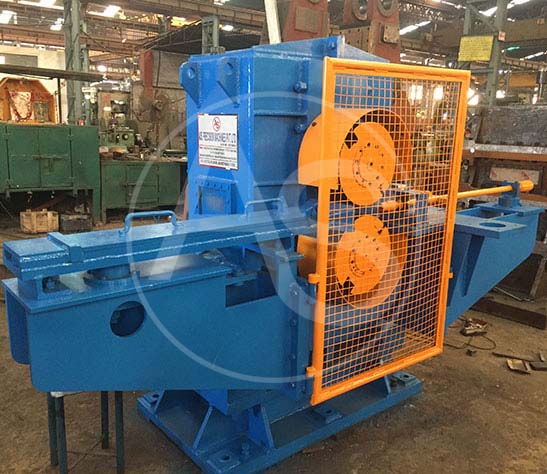
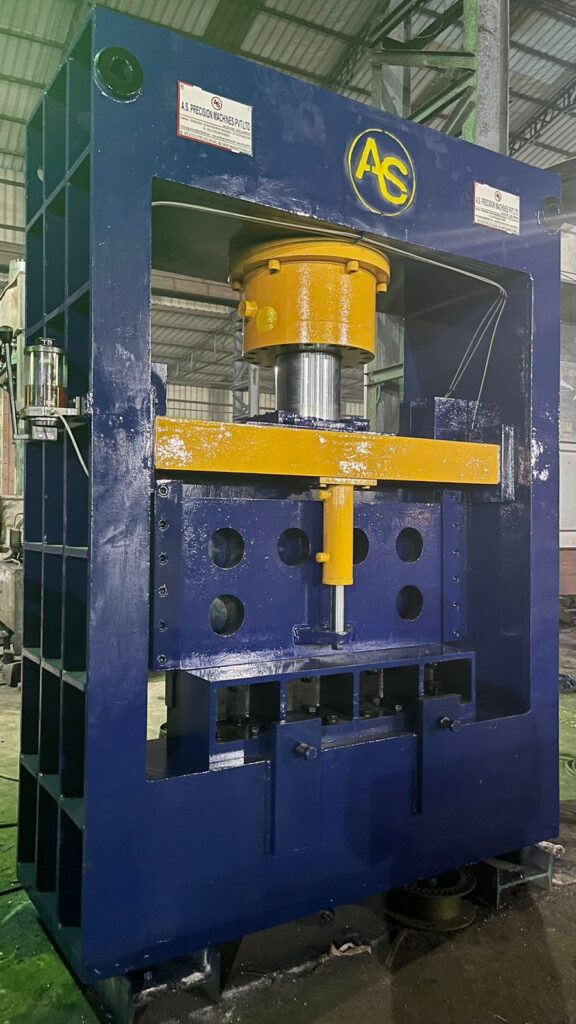
Cold Hydraulic Shear
HYDRAULIC COLD SHEAR
FUNCTION: To cut bars to commercial lengths.
LOCATION: After cooling bed, before bar handling area
CAPACITY: 160 tons to 300 tons.
CONSTRUCTION: The hydraulic shear consists of:
Foundation mounted fabricated housing structure.
Cutting hydraulic cylinder #1, mounted on the top of the housing structure. It has stroke of about 200 mm.
Hydraulic working pressure for cutting hydraulic cylinder #1 is 200 Kg/cm2 appx.
Power pack system#1 for cutting hydraulic cylinder has 240 Kg/cm2 system pressure, provides hydraulic oil to the cutting cylinder.
Hydraulic cylinder #2 ( gag cylinder) about 50 mm bore at working pressure of 200 kg/cm2 operates to gag the stock while cutting operation is going on after which the cylinder piston is withdrawn.
Power pack system#2 with system pressure 240 Kg/cm2, provides hydraulic oil to the gag cylinder. System flow
A moving blade about 800 to 1000 mm long is held in the moving mounting block and ram slides in side plates fixed to the housing structure.
A fixed blade of same length is mounted in fixed mounting block in turn is mounted in the bottom of window housing.
Cycle time depending on the requirement to cut cluster of bars is about 8-10 seconds.
No. of cuts per hour 175 maximum depending on the requirement of the rolling mill.
Billet Shear
ASPM manufactures Billet Shear to cut upto 300mm size billet in MS and alloy steel grade. The billet shear consist of fixed blade at the bottom and a moving blade through the guides to cut billets as per requirement.
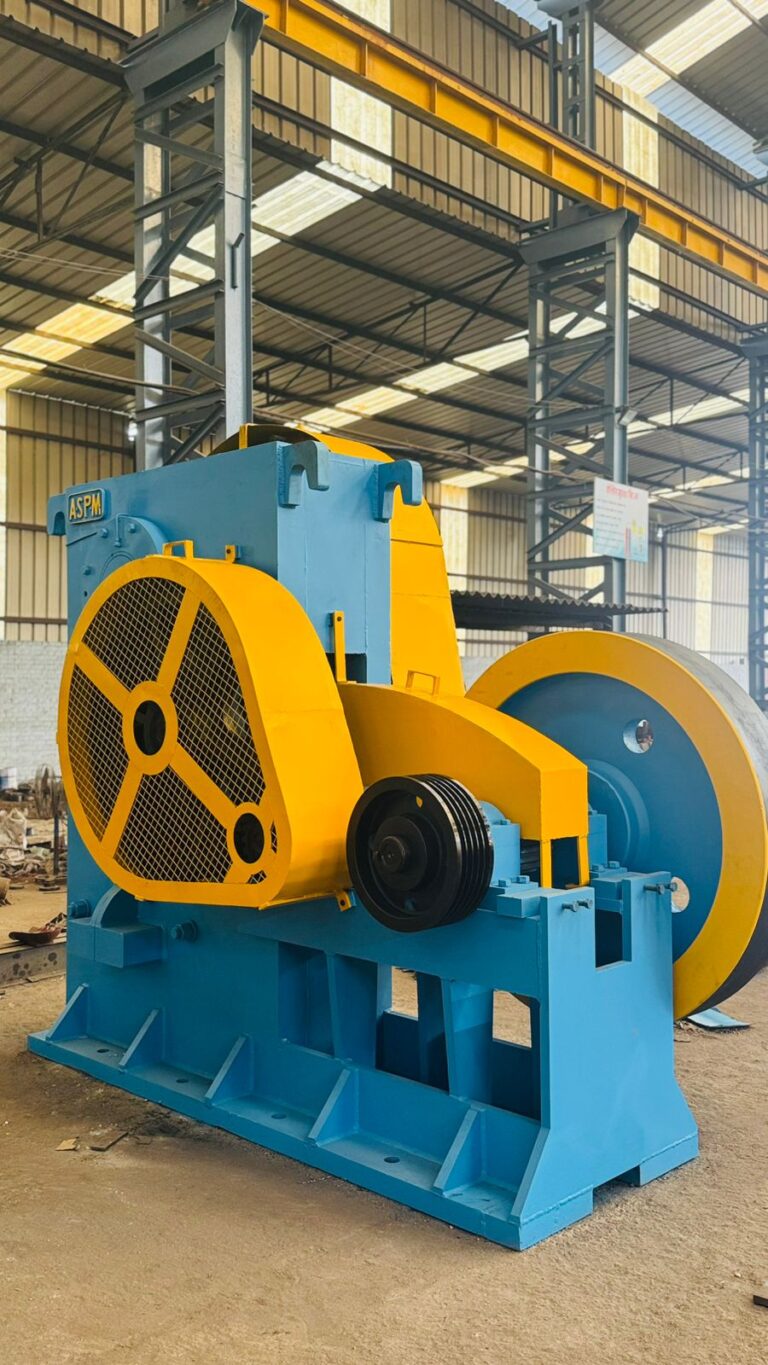
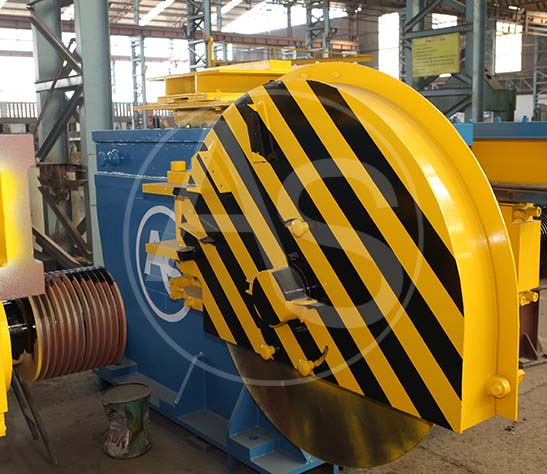
Hot Saw
These Hot Saws are used in hot rolling mill to cut desired length and as well as trim Front & Rear Ends. These Saws are capable of cutting section size ranging from 70 to 600mm(Beam, Channel, Angle) and as well as Square, Rounds of 40 to 250mm, slabs of 250x75mm. These Hot saws presently are two types: Pendulum swinging type and horizontal sliding type.
Cold Saw
The cold saws in design are similar to hot saw but instead of chip cutting as like hot saw the cold saw cuts the material through friction melting of the material by cold saw blade. The cold saw blade instead of having teeth on the periphery has serrations which provide friction cutting of the material at higher speeds than the hot saw. The feed speed is also lower as compared to hot saw feed speed.
